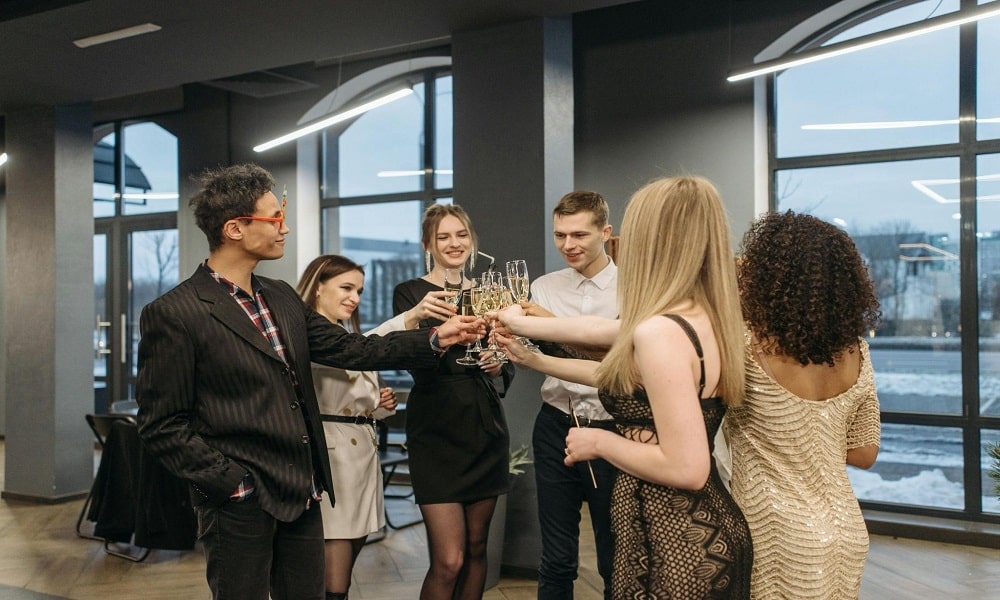Strategic sponsorships transform events into powerful brand touchpoints, connecting you with engaged audiences and driving measurable results.
Whether you’re unveiling a new product or strengthening community ties, an effective sponsorship strategy turns attendees into advocates.
Below, we dive into six detailed steps (from partner selection to post-event analysis) so you can design sponsorships that boost visibility, deepen relationships, and deliver a solid return on investment.
Choose the Right Partners
First, hone in on events or organizations whose mission and audience closely match your brand values. Don’t just chase large attendance figures. Look at attendee demographics, past engagement rates, and the host’s reputation.
For instance, if you’re a sustainable skincare line, sponsoring an eco-conscious festival or a clean-beauty summit will resonate far more than a general trade show.
Reach out to organizers early to request media kits, previous attendee surveys, and social-media engagement stats. This data lets you forecast how many qualified leads you’ll reach and estimate potential social impressions.
Aligning mission and metrics ensures your sponsorship dollars cultivate genuine connections rather than fleeting brand awareness.
Craft Customized Sponsorship Packages
With target partners identified, build tiered packages that cater to diverse sponsor goals and budgets.
Your “Bronze” level might include logo placement on digital banners and a shout-out in the event newsletter, while “Platinum” could feature a branded lounge area, a 10-minute speaking slot, and a dedicated social-media takeover.
To further promote social events, integrate eye-catching event-promotion banners on high-traffic pages of your partner’s site, embed scannable QR codes that link to your VIP sign-up page, and offer co-branded Instagram filters attendees can download on the spot..
By mapping benefits to sponsor objectives (whether lead generation, thought-leadership, or community goodwill), you create transparent value and foster long-term partnerships.
Integrate Virtual Components
Hybrid events are now table stakes. Layer virtual touchpoints onto your sponsorship by live-streaming keynote sessions, hosting moderated panel discussions via webinar, or setting up 3D-modeled virtual exhibitor booths that replicate the in-person experience.
Utilize a platform that captures detailed analytics, such as view count, average watch time, and click-through rates, to measure engagement.
The impact of virtual events on attendee reach can double your footprint compared to live-only formats. It’s also an impactful way to lower your carbon footprint and adopt more sustainable practices, which is good for the planet and your brand reputation.
Plan for interactive elements, such as live polls, Q&A sessions, or downloadable resource centers, to keep remote participants actively engaged and track which content resonates most.
Design Immersive On-Site Activations
To stand out on the expo floor, create multi-sensory experiences that invite attendees to linger, share, and remember. Think branded photo booths with instant social-share stations, hands-on product demo bars where guests can test new offerings, or themed lounges complete with branded signage, ambient music, and custom scents.
Partner with experts like Cogs and Marvel brand activation services to handle logistics, from structural design and AV setup to trained brand ambassadors who guide each guest interaction.
By orchestrating a seamless, memorable activation, you ensure your logo isn’t just a backdrop but the centerpiece of an engaging narrative that translates into social posts, user-generated content, and word-of-mouth buzz.
Build Influencer and Media Partnerships
Partnering with influencers and media outlets can dramatically amplify your sponsorship’s reach and credibility. Start by identifying influencers whose followers closely match your target audience. Look for engagement rates above 3% and a content style that aligns with your brand’s voice.
Offer them exclusive access to your activation (early product demos, VIP lounge invitation, or behind-the-scenes tour) in exchange for honest coverage on their blogs, social channels, or podcasts.
Simultaneously, work with relevant trade publications and local media: provide press releases, high-res imagery, and spokesperson interviews to secure features before and after the event. Media partners can boost attendance, generate pre-event buzz, and extend your reach beyond on-site attendees.
To keep these relationships strong, track referral traffic and social-media mentions attributable to each partner, then share those analytics in a post-event debrief.
By weaving influencer and media outreach into your sponsorship strategy, you transform your event from a standalone moment into a multi-channel campaign that continually engages new audiences.
Evaluate and Optimize Your Sponsorship Strategy
Post-event analysis is where you turn impressions into insights. Pull data on badge scans, session attendance, social-media mentions, and on-site sign-ups. Combine quantitative metrics with qualitative feedback by surveying attendees on what resonated most and conducting brief exit interviews with booth visitors.
Compare performance against KPIs such as cost per lead, social reach, and brand-sentiment shifts. Identify which activation elements drove the highest engagement. Was it the VR demo, the influencer speaker, or the gourmet coffee bar?
Use these learnings to refine your next sponsorship package: reallocate your budget toward top-performing activations, refine your messaging for higher impact, and negotiate improved media placements with event organizers.
This continuous optimization loop ensures each future sponsorship delivers stronger results and deeper brand-audience connections.


